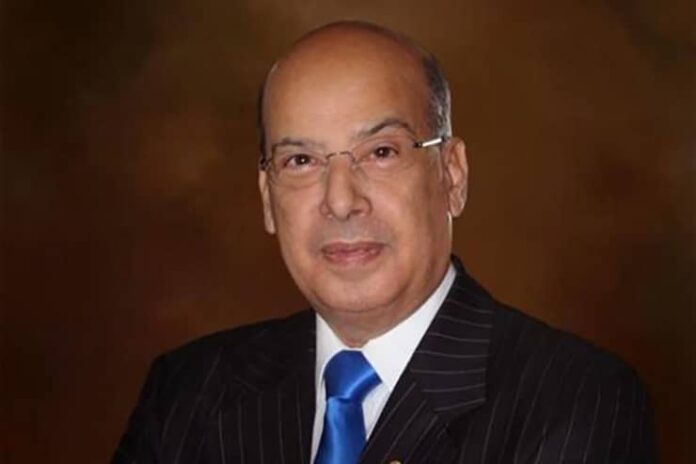The Secretary-General of the Organization of American States (OAS), Albert Ramdin, has proposed a Road Map for Haiti. It is ambitious, detailed, and promising if adequately owned by Haitians. But plans don’t save people; action, commitment, and accountability do. Haitians must set priorities, approve budgets, and be accountable to their citizens and the international community for results.
Ramdin deserves credit for taking a frontal, active position on Haiti. He has put a framework on the table and invited OAS Member States, Permanent Observers, and Inter-American institutions to help shape it. That is leadership. If others join the momentum he has initiated, this plan can move from paper to practice.
A crisis that can’t wait for perfect Haiti is living through the hemisphere’s severest security and governance breakdown. Armed gangs dominate much of Port-au-Prince; hundreds of thousands are displaced; schools, clinics, water, food—everything is frayed. Women and girls face the brunt of this crisis. Gang rape is rampant, particularly in the capital, and is exacerbated by precarious conditions in displacement camps. The plea is simple and urgent: act now.
What the Road Map gets right and the help it needs The Road Map acknowledges that the United Nations must lead on peace and security; the OAS should facilitate, convene, and provide targeted civilian support. It casts the Government of Haiti as owner and agenda-setter, with a Coordinating Group Mechanism (CGM)—Haiti, the UN, CARICOM, and the OAS—providing strategic direction and political oversight. That architecture is sound—if “Haitian-led” is operationalised as Haitian decision rights, not just attendance.
Security financing is the plan’s roadblock. The Multinational Security Support mission runs on voluntary contributions, and deployment has lagged. A UN support office has been proposed to improve logistics, but until predictable money and machinery exist, timelines will slip—and so will confidence.
The Haitian test: ownership as control Ownership must be matched by decision authority. Three practical safeguards would make that real, as the Antigua and Barbuda delegation argued to the OAS Permanent Council on August 20.
First, Haiti should chair—or at least co-chair—the Coordinating Group. No pillar workplan, budget, or major procurement should proceed without Haitian concurrence recorded in the minutes, with an emergency-only exception and prompt written notice after any action. This ensures that no one can claim the Road Map was imposed.
Second, a Haitian-issued annual implementation plan should become the map to which donors align. If Haitians cannot say, “This is our plan,” then it isn’t.
Third, billions of dollars have been spent on Haiti over decades, yet donors have not seen commensurate social and economic improvements. Scepticism is natural; accountability is essential. Therefore, the Road Map should include a public scorecard. Quarterly results issued by Haitian authorities—tracking security, governance, humanitarian access, and the fight against gun-running and criminal finance—would provide assurance and accountability.
These safeguards turn “Haitian-led” from words into decisions.
CARICOM’s role The Caribbean Community (CARICOM) has tried to play a role in Haiti to the extent of its Member States’ collective capacity. The CARICOM Eminent Persons Group (EPG) helped broker the current transitional arrangements, which have not been without criticism. Ramdin’s Road Map envisages a role for CARICOM in the CGM, but CARICOM has yet to review the plan collectively; it was recently submitted to Jamaica’s Prime Minister, Andrew Holness, as CARICOM Chair. CARICOM should ensure its role reinforces Haitian consensus-building and decision-making when it engages.
Money talks. Make it speak plainly. The Road Map’s price tag—about US$2.6 billion—is hefty. Guardrails must give donors confidence. These should include predictable security support through a UN-managed platform with clear modalities, drawing on voluntary and bilateral funds—not a scatter of ad hoc pledges. Before any donors’ conference, there should also be pre-pledged packages for humanitarian action and elections; the conference can then align medium- and longer-term projects to the Haitian plan. Significantly, each country should contribute according to real capacity, not quotas or expectations. Finally, to attract funding, the budget and unit costs should be published, and funds should be released in tranches only when verified security, governance, and access benchmarks are met.
The calendar cliff: 7 February 2026 One date could undo everything. Haiti will hit a governance barrier if a lawful successor to the Transitional Presidential Council (TPC) is not in place by 7 February 2026. Security coordination will stall, election preparation will drift, and dissatisfaction and dissension will grow. There is already growing concern in Haiti that the deadline must not arrive with the unelected TPC still in place.
As contingency planning, a last-resort mechanism should be prepared by the end of September 2025 to replace the TPC if elections cannot credibly be held to install a representative government. It is now evident that no such elections can occur while gangs dominate daily life.
The contingency should be formulated jointly by appointees of Haitian representative groups, CARICOM, the UN, and the OAS, and noted by the OAS Permanent Council. It should provide a 90-day “caretaker body” limited to essential functions: security coordination, humanitarian facilitation, and election preparations.
The measure of solidarity There’s a cruel belief that Haiti’s suffering is inevitable. It isn’t. Haitians are a proud people despite the poverty of their country and the grinding conditions they endure.
The OAS Secretary-General’s proposed Road Map can help—if the funding is real, the security support is predictable, and Haitian leadership is committed and at the decision-making table.
The plan is not perfect, but it offers a tunnel with a light at its end. Haitians and the international community should help refine, support, and implement it. No one should become immune to Haiti’s


